History
FORREST, Alan; HAGEMANN Karen; RENDALL Jane (eds.), Soldiers, Citizens and Civilians: Experiences and Perceptions of the Revolutionary and Napoleonic Wars,
1790-1820
The Revolutionary and Napoleonic Wars have been described as the first 'total war', which affected millions of people's lives and brought a whole continent into contact with armies and bloodshed. But the extent to which the constant state of war that existed between 1792 and 1815 shaped everyday experience has been much less studied, even although these wars, conducted by mass armies and often mobilized by patriotism, led to the circulation of millions of people throughout Europe and beyond. The changing nature of warfare had far-reaching consequences for civil society as well as for those directly engaged in fighting.
OCAMPO, Emilio, The Emperor's Last Campaign: A Napoleonic Empire in America
“Napoleon's last campaign didn't end at Waterloo. After that fateful day on June 1815, hundreds if not thousands of veterans of Napoleon's army emigrated to America. Many went farther south and joined the rebels fighting for independence in the Spanish colonies, from Mexico to Buenos Aires. The Bonapartists roiled the Western World as they sought fortune, fame, and glory in the expanding United States and in the tumultuous Spanish Americas suffering from repression and civil disorder, and even in the states of Europe. […] This is the first full-length examination of the Bonapartists who emigrated from France after Napoleon's defeat and exile, who formed a loose confederation with adventurers and romantics, and who contemplated a new empire in the Western Hemisphere.”
Military history
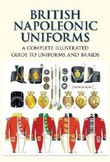 FRANKLIN, Carl E., British Napoleonic Uniforms
FRANKLIN, Carl E., British Napoleonic Uniforms
“In British Napoleonic Uniforms, Carl Franklin's lavishly illustrated third volume for The History Press, these changes to the uniforms of all the numbered regiments of cavalry and infantry are discussed in detail. It is illustrated with more than two hundred full-colour plates of the uniforms and every aspect of their regimental distinctions.”
GILL, John H., 1809: Thunder On The Danube vols. I and II
“The Franco-Austrian War of 1809 was Napoleon's last victorious war. Napoleon faced the Archduke Charles, the best of the Habsburg commanders, and a reformed Austrian Army that was arguably the best ever fielded by the Danubian Monarchy. The French ultimately triumphed but the margin of superiority was decreasing and all of Napoleon's skill and determination was required to achieve a victorious outcome. Gill tackles the political background to the war, especially the motivations that prompted Austria to launch an offensive against France while Napoleon and many of his veterans were distracted in Spain.”
PARET, Peter, The Cognitive Challenge of War: Prussia 1806
“Responding to the enemy's innovation in war presents problems to soldiers and societies of all times. This book traces Napoleon's victory over Prussia in 1806 and Prussia's effort to recover from defeat to show how in one particular historical episode operational analyses together with institutional and political decisions eventually turned defeat to victory.”
Naval history
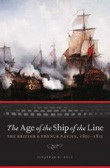 DULL, Jonathan R., The Age of the Ship of the Line: British and French Navies 1650-1815
DULL, Jonathan R., The Age of the Ship of the Line: British and French Navies 1650-1815
“For nearly two hundred years huge wooden warships called “ships of the line” dominated war at sea and were thus instrumental in the European struggle for power and the spread of imperialism. Foremost among the great naval powers were Great Britain and France, whose advanced economies could support large numbers of these expensive ships. This book, the first joint history of these great navies, offers a picture of the two forces, their shipbuilding programs, naval campaigns, and battles, and their wartime strategies and diplomacy.”
MACKAY, Ruddock; DUFFY, Michael, Hawke: Nelson and British Naval Leadership 1747-1805
“Unlike other books on eighteenth-century British admirals, which tell and re-tell the history of admirals' successful exploits, this book investigates what exactly were the qualities which made for successful naval leadership in this period. It identifies twelve key qualities, and discusses how far each of the many leading admirals of the period possessed these qualities. It argues that Hawke and Nelson were the outstanding naval leaders of the eighteenth century, outlining their respective careers and showing how both of them possessed, more than the other admirals, the key qualities of leadership.”
A "St. Helena Miscellany"
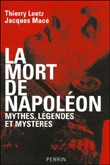 BRUNYEE, Paul F., Napoleon's Britons and the St. Helena Decision
BRUNYEE, Paul F., Napoleon's Britons and the St. Helena Decision
In Napoleon's Britons, Paul Brunyee presents a fresh study of Napoleon's last years as a captive on St Helena, telling the story of this final chapter in Bonaparte's life as seen through the eyes of the Britons around him. The Royal Navy officers to whom he surrendered; the people of Brixham who came to gaze in awe at the man when he appeared on the deck of the Bellerophon; the British radicals who recalled what he had done to curb the French Revolution; and those whose job it was to guard and entertain the most famous dictator in Europe on the small island to which he was banished.
HOWARD, Martin, Napoleon's Poisoned Chalice: the Emperor and his doctors on St. Helena
“In 1815 Napoleon Bonaparte arrived on the island of St. Helena to begin his imprisonment following Waterloo. By 1821 he was dead. During his brief stay, he crossed paths with six medical men, all of whom would be changed by the encounter, whether by court martial, the shame of misdiagnosis, or resulting celebrity. What would seem to be a straightforward post became entangled with politics, as Governor Hudson Lowe became paranoid as to the motivations of each doctor and brought their every move into question. In Napoleon's Poisoned Chalice, Martin Howard addresses the political pitfalls navigated with varying success by the men who were assigned to care for the most famous man in Europe. The hostility that sprang up between individuals thrown together in isolation, the impossible situations the doctors found themselves in and the fear of censure when Napoleon finally began to die.”
LENTZ, Thierry; MACE Jacques, La Mort de Napoléon: Mythes, Légendes et Mystères (in French)
“For several years, mystery has lingered over the circumstances surrounding the death and burial of Napoleon. For some, the Emperor was poisoned with arsenic by one of his entourage. For others, it is not his body that lies buried in Les Invalides, but that of his maître d'hôtel, deceased a couple of years prior to Napoleon. These two contradictory theories have succeeded in sowing the seeds of doubt, and in uniting in the pursuit of a common goal: opening Napoleon's tomb at Les Invalides and examining the remains housed within. Is this claim founded on any undeniable proof? What do we really know about Napoleon's cause of death? What happened during the transport of the body between St. Helena and Paris in 1840? Does a conspiracy of silence really exist, maintaining the convenient and accepted historical truths? Such are just some of the questions that this work answers.”
Biographies
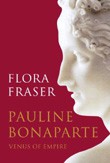 FRASER, Flora, Pauline Bonaparte: Venus of Empire
FRASER, Flora, Pauline Bonaparte: Venus of Empire
“At the turn of the nineteenth century, she was considered by many to be the most beautiful woman in Europe. She shocked the continent with the boldness of her love affairs, her opulent wardrobe and jewels, and, most famously, her decision to pose nearly nude for Canova's sculpture, which has been replicated in countless ways through the years. But just as remarkable as Pauline's private life was her fidelity to the emperor (if not to her husbands).”
MOOREHEAD, Caroline, Dancing to the Precipice: Lucie De La Tour Du Pin and the French Revolution
“Born Lucie Dillon, to a half-French mother and an Anglo-Irish father, her world was Versailles and the court of Louis XVI and Marie Antoinette. She married a French aristocrat, and narrowly survived the French Revolution, escaping to America at the time of Washington and Jefferson. Here, she lived a life of milking cows and chopping wood, having previously been accustomed to the lavish life of the French court. Returning to France prematurely, Lucie had to flee again, this time to England, where she took up sewing in order to support herself and her family. Repeatedly in the right place at the right time, Lucie saw the Battle of Waterloo, the fall of Napoleon and the return of Louis XVIII, and the Restoration. She was an outstanding diarist and a remarkable woman, who witnessed one of the most dramatic and brutal periods of history, playing the part of observer, commentator and, often, participant.”
Napoleonic literature, memoirs and correspondence
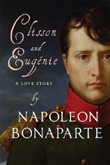 BONAPARTE, Napoleon (eds. Emilie Barthet & Peter Hicks), Clisson and Eugénie: A Love Story
BONAPARTE, Napoleon (eds. Emilie Barthet & Peter Hicks), Clisson and Eugénie: A Love Story
Triumphant on the field of battle, Clisson turns his back on worldly success. He falls in love and marries Eugénie, but how long will their passion survive? The tragic tale of Clisson and Eugénie reveals one of history's great leaders as an accomplished writer of fiction. Completed when he was only 26, the story contains parallels with Napoleon's own experiences and offers a fascinating insight into the young man's view of love, women and military life.
BONAPARTE, Napoleon (ed. Michel Kerautret), Correspondance générale de Napoléon Bonaparte. Tome 6 : 1806 – Vers le Grand Empire (in French)
No Christmas list would be complete without the latest volume of the General Correspondence of Napoleon Bonaparte. Volume 6 covers the entirety of 1806, bringing together some 2,679 letters (the Second Empire publication contained just 1,896), commentaries from period specialist historians, and a preface from Jean-Claude Casanova.
LINDAU, Friedrich (ed. Andrew Uffindell), A Waterloo Hero: The Adventures of Friedrich Lindau
“By all accounts, Friedrich Lindau was a remarkable soldier of the King's German Legion. He served with distinction under Wellington from Lisbon to as far as Bayonne, and was involved in all major engagements, including
Albuera, Badajoz, Salamanca, Vittoria and San Sebastian.
Most notably, he fought and was captured at La Haie Sainte but was the only ranking soldier mentioned by name in Major Baring's account of the battle. For his actions he was awarded the Guelphic Medal for Bravery. That said, he had a reputation as a notorious forager, looter and was said to have killed a civilian while on leave in 1814.”
VON CHEZY, Helmina (ed. Bénédicte Savoy), Helmina von Chézy, Leben und Kunst in Paris seit Napoleon I (in German)
“Mirroring the urban dynamic which von Chéwy, who was from Berlin, experienced during her time in Paris, the work ignores any chronological order or hierarchy, instead preferring to focus on the various themes that constitute her life. This diarist, intellectual and art-lover was close to Vivant Denon (1747-1825, director of the Musée Napoléon, now the Louvre) and was often present at Juliette Récamier's salon (1777-1849, patron of the arts and friend of Madame de Staël and Chateaubriand).”
Multimedia
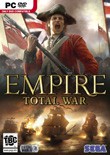 FONDATION NAPOLEON, Napoleonica. La Revue
FONDATION NAPOLEON, Napoleonica. La Revue
Napoleonica. La Revue is a scholarly review produced by the Fondation Napoléon, which features articles on the history of the First and Second Empires. The topics covered vary, taking in economics, politics, administration, foreign affairs, military, naval, social and art history, as well as in-depth bibliographies and book reviews. An annual subscription is available for 60 €, which covers the three issues and all the articles within which are published during the year. Alternatively, articles can be purchased individually for 7 €.
SEGA; THE CREATIVE ASSEMBLY, Empire: Total War
Empire: Total War is the fifth installment of the Total War series, a turn-based strategy and real-time tactics computer game developed by The Creative Assembly and published by Sega. Players choose a contemporary 18th century faction and set out to ensure that faction's domination over the known world through military force, politics, diplomacy, espionage and economics.
Audio and e-books
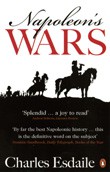 ESDAILE, Charles, Napoleon's Wars: An International History, 1803-1815
ESDAILE, Charles, Napoleon's Wars: An International History, 1803-1815
“No other soldier has provoked as much argument as Napoleon Bonaparte. Was Napoleon a monster, driven on by an endless, ruinous quest for military glory – or was he a social and political visionary brought down by the petty, reactionary kings and emperors, clinging to their privileges? Napoleon's Wars is a book which has no doubt about Napoleon's insatiable greed for military glory, but it is interested in far more than that. Charles Esdaile is profoundly interested in a pan-European context: what was it that made the countries of Europe fight each other, for so long and with such devastating results.” Available in audio and e-book format.
BONAPARTE, Napoleon (eds. Emilie Barthet & Peter Hicks), Clisson and Eugenie: A Love Story
The English translation of Clisson and Eugenie by Napoleon Bonaparte is also available in audio book format.
For the coffee table
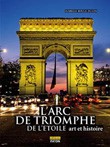 LEROY, Isabelle, Le Panorama de la Bataille de Waterloo (in French)
LEROY, Isabelle, Le Panorama de la Bataille de Waterloo (in French)
“This publication's aims are three-fold: firstly present the panorama of the Battle of Waterloo in its historical context, as part of the Waterloo battle site in general; secondly explain the history of the panorama phenomenon, a medium which at one point received hundreds of thousands of visitors before cinema became widespread; and thirdly, offer an overall assessment (based on over twenty years of research) of panorama production in Belgium, a country once known as “the nation of panoramas”.”
ROUGE-DUCOS, Isabelle, L'Arc de Triomphe de l'Etoile, art et histoire (in French)
“Winner of the 2009 Fondation Napoléon Grand Prix history prize, this book by Isabelle Rouge-Ducos is the first complete work on the Arc de Triomphe. The author describes the history of its construction, and in doing so highlights the various different plans produced by the architects in charge, designs and drawings by individual artists, and previously unseen photographs of the arch's sculptures. She also explains the important commemorative role that the location has played in the nation's collective psyche, including in such famous events as the Prussian's bivouac in 1815, Victor Hugo's funeral procession, the victory parade in 1918, and the liberation of Paris in 1944.”
TODD, Richard A., Napoleon's Medals: victory to the arts
“During his time in power Napoleon Bonaparte commissioned hundreds of medals to be struck to mark the course of his reign; from conquests, successful treaties and marriage, to the introduction of the smallpox vaccination and an unsuccessful attempt on his own life. Napoleon's Medals sheds light on this neglected artistic achievement; how Napoleon's artists displayed the stolen art from his Italian campaign on the medals to glorify his conquests, and used classical models to clothe him with heroic attributes.”
For children
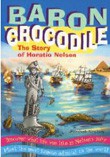 BURLEIGH, Robert, Napoleon: The Story of the Little Corporal (ages 4 to 8)
BURLEIGH, Robert, Napoleon: The Story of the Little Corporal (ages 4 to 8)
Napoleon achieved countless military victories and unified half a continent; he was a corporal, general, consul, and emperor. The life and career of Napoleon sounds impossible—but it's true. His success, though brilliant, was also short-lived. Robert Burleigh's biography of the “little corporal”, illustrated by period artworks and artifacts, describes the remarkable rise and fall of this charismatic and unusual man.
LETHBRIDGE, Lucy, Napoleon (ages 7 and upwards)
“Stirring narrative and lively dialogue combine with full-colour illustrations to bring Napoleon's epic story to life. Young readers will be intrigued and excited as they follow Napoleon's remarkable life from a humble Corsican childhood to Emperor of France.”
NEWBERY, Elizabeth, Baron Crocodile: The Story of Horatio Nelson (ages 6-11)
“Discover what life was like in Nelson's Navy and meet the most famous admiral in the world. Why was Nelson such an inspirational leader? Who called him Baron Crocodile? How did he lose an arm and what happened to his eye? Who was his biggest enemy? And who was his greatest love?”
TIERNEY, Tom, Napoleon and Josephine Paper Dolls
“Paper dolls fans and history buffs will treasure this collection featuring one of the world's most famous and fascinating couples. Figures of Napoleon and his empress, Josephine, are accompanied by lavish costumes for their wedding, coronation, and other important occasions.”


